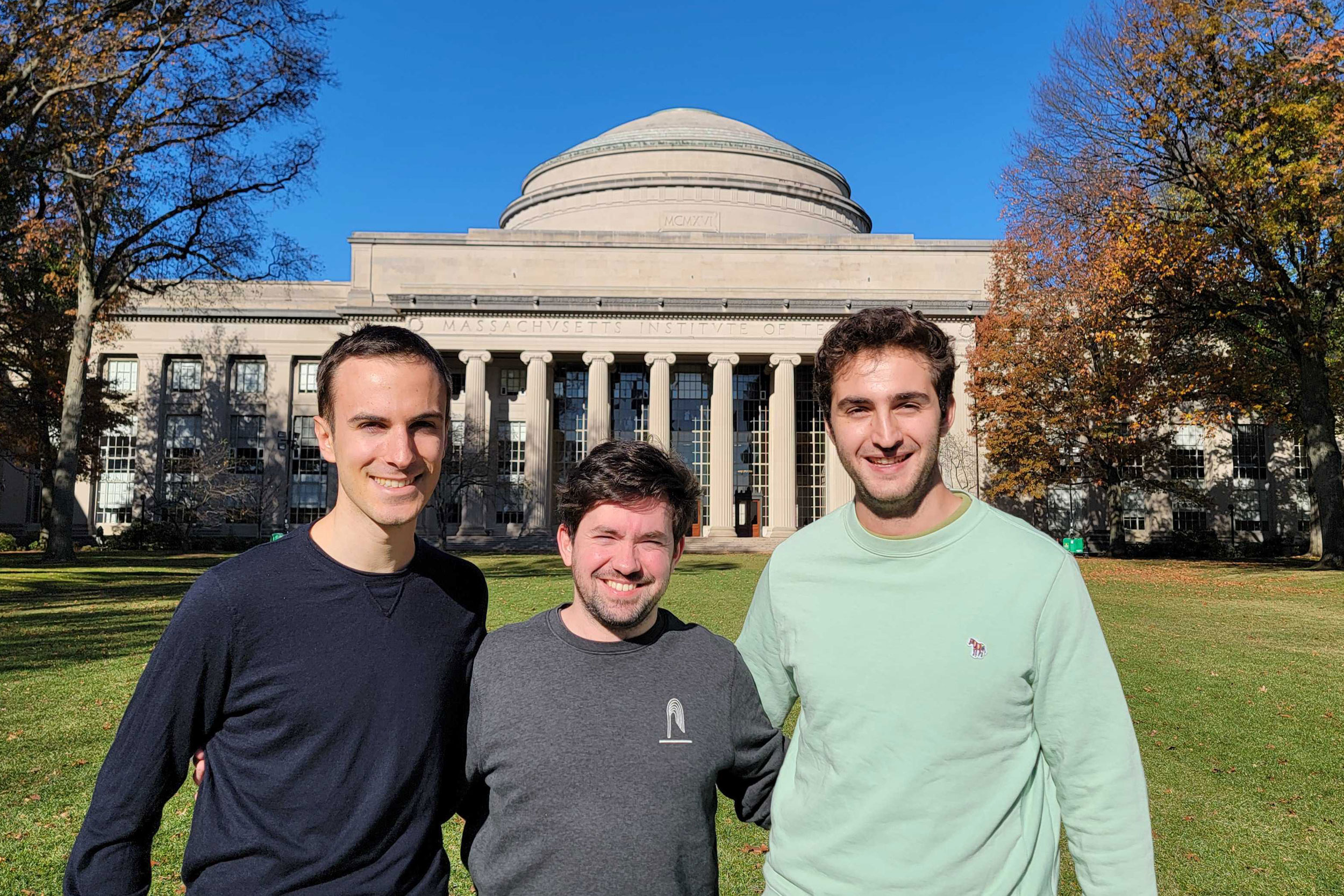

MIT scientists have released a powerful, open-source AI model, called Boltz-1, that could significantly accelerate biomedical research and drug development.
Developed by a team of researchers in the MIT Jameel Clinic for Machine Learning in Health, Boltz-1 is the first fully open-source model that achieves state-of-the-art performance at the level of AlphaFold3, the model from Google DeepMind that predicts the 3D structures of proteins and other biological molecules.
MIT graduate students Jeremy Wohlwend and Gabriele Corso were the lead developers of Boltz-1, along with MIT Jameel Clinic Research Affiliate Saro Passaro and MIT professors of electrical engineering and computer science Regina Barzilay and Tommi Jaakkola. Wohlwend and Corso presented the model at a Dec. 5 event at MIT’s Stata Center, where they said their ultimate goal is to foster global collaboration, accelerate discoveries, and provide a robust platform for advancing biomolecular modeling.
“We hope for this to be a starting point for the community,” Corso said. “There is a reason we call it Boltz-1 and not Boltz. This is not the end of the line. We want as much contribution from the community as we can get.”
Proteins play an essential role in nearly all biological processes. A protein’s shape is closely connected with its function, so understanding a protein’s structure is critical for designing new drugs or engineering new proteins with specific functionalities. But because of the extremely complex process by which a protein’s long chain of amino acids is folded into a 3D structure, accurately predicting that structure has been a major challenge for decades.
DeepMind’s AlphaFold2, which earned Demis Hassabis and John Jumper the 2024 Nobel Prize in Chemistry, uses machine learning to rapidly predict 3D protein structures that are so accurate they are indistinguishable from those experimentally derived by scientists. This open-source model has been used by academic and commercial research teams around the world, spurring many advancements in drug development.
AlphaFold3 improves upon its predecessors by incorporating a generative AI model, known as a diffusion model, which can better handle the amount of uncertainty involved in predicting extremely complex protein structures. Unlike AlphaFold2, however, AlphaFold3 is not fully open source, nor is it available for commercial use, which prompted criticism from the scientific community and kicked off a global race to build a commercially available version of the model.
For their work on Boltz-1, the MIT researchers followed the same initial approach as AlphaFold3, but after studying the underlying diffusion model, they explored potential improvements. They incorporated those that boosted the model’s accuracy the most, such as new algorithms that improve prediction efficiency.
Along with the model itself, they open-sourced their entire pipeline for training and fine-tuning so other scientists can build upon Boltz-1.
“I am immensely proud of Jeremy, Gabriele, Saro, and the rest of the Jameel Clinic team for making this release happen. This project took many days and nights of work, with unwavering determination to get to this point. There are many exciting ideas for further improvements and we look forward to sharing them in the coming months,” Barzilay says.
It took the MIT team four months of work, and many experiments, to develop Boltz-1. One of their biggest challenges was overcoming the ambiguity and heterogeneity contained in the Protein Data Bank, a collection of all biomolecular structures that thousands of biologists have solved in the past 70 years.
“I had a lot of long nights wrestling with these data. A lot of it is pure domain knowledge that one just has to acquire. There are no shortcuts,” Wohlwend says.
In the end, their experiments show that Boltz-1 attains the same level of accuracy as AlphaFold3 on a diverse set of complex biomolecular structure predictions.
“What Jeremy, Gabriele, and Saro have accomplished is nothing short of remarkable. Their hard work and persistence on this project has made biomolecular structure prediction more accessible to the broader community and will revolutionize advancements in molecular sciences,” says Jaakkola.
The researchers plan to continue improving the performance of Boltz-1 and reduce the amount of time it takes to make predictions. They also invite researchers to try Boltz-1 on their GitHub repository and connect with fellow users of Boltz-1 on their Slack channel.
“We think there is still many, many years of work to improve these models. We are very eager to collaborate with others and see what the community does with this tool,” Wohlwend adds.
Mathai Mammen, CEO and president of Parabilis Medicines, calls Boltz-1 a “breakthrough” model. “By open sourcing this advance, the MIT Jameel Clinic and collaborators are democratizing access to cutting-edge structural biology tools,” he says. “This landmark effort will accelerate the creation of life-changing medicines. Thank you to the Boltz-1 team for driving this profound leap forward!”
“Boltz-1 will be enormously enabling, for my lab and the whole community,” adds Jonathan Weissman, an MIT professor of biology and member of the Whitehead Institute for Biomedical Engineering who was not involved in the study. “We will see a whole wave of discoveries made possible by democratizing this powerful tool.” Weissman adds that he anticipates that the open-source nature of Boltz-1 will lead to a vast array of creative new applications.
This work was also supported by a U.S. National Science Foundation Expeditions grant; the Jameel Clinic; the U.S. Defense Threat Reduction Agency Discovery of Medical Countermeasures Against New and Emerging (DOMANE) Threats program; and the MATCHMAKERS project supported by the Cancer Grand Challenges partnership financed by Cancer Research UK and the U.S. National Cancer Institute.